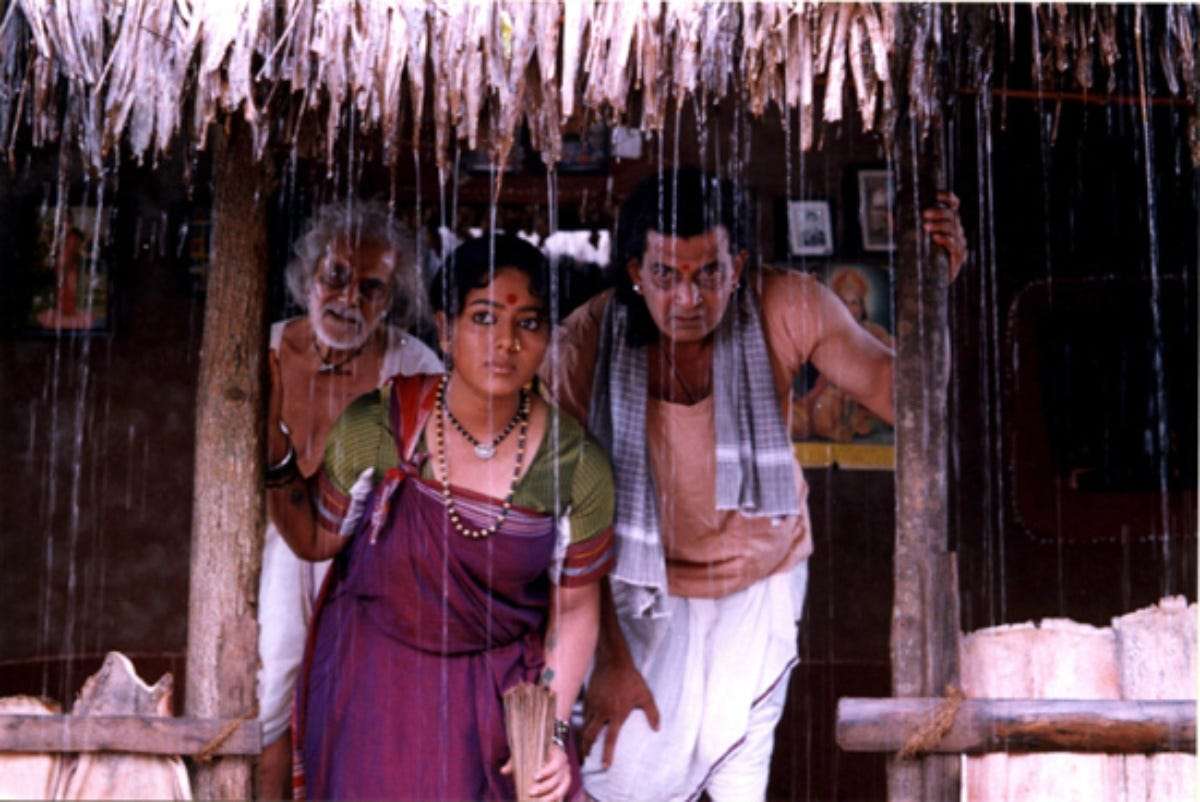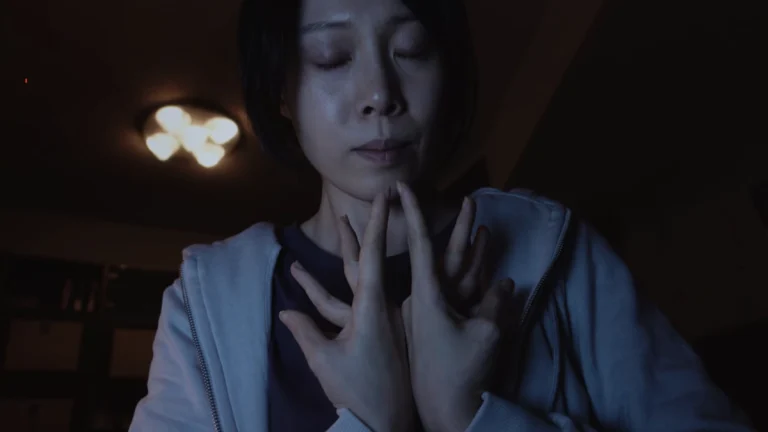“Islands are the reminders of arrivals and departures,” says the renowned American travel writer Gretel Ehrlich. They transcend us to a world unexplored and untouched. Life on an island has its share of likes and dislikes. It’s not as magnificent and thrilling as we see and feel it from the perspective of an island dweller. The recent landslide that snatched the lives and lands of Wayanadan people has broken the hearts of multitudes. It’s hard to listen to the news or watch any information from Wayanad’s Chooralmala and Mundakkai without shedding a teardrop. The unprecedented aftermath of disasters can alter our lives at times. It’s the need of the hour to know and remain in touch with the environment.
This immediately took me back to the film I watched long ago. I felt an urge to rewind and watch a few portions of it. It did strike a note on me somewhere. Perhaps the one and only Andaman and Nicobar Islands I have explored in my whole life. I just thought about what would happen if the government or authorities asked one to leave the island because of dam construction. How will they accept the decision and muster the mental and physical courage (or stability) to withstand it and accept what the future has in store for them? My mind resonated with the aquatic allegories penned by the renowned Kannada writer Nobert D’Souza in his acclaimed novel Dweepa ( Island).
I could not resist watching the cinematic exploration of environmental and cultural preservation brimming with the shades of water. The Kannada movie “Dweepa,” released in 2002, gives a glimpse of the poignant struggle between progress and nature and how humans become victims of this harrowing plight. Set against the backdrop of the picturesque Western Ghats, Girish Kasaravalli’s award-winning adaptation unfolds on an island destined to be submerged by a dam.
At its core, the film revolves around Nagi, an unwavering island dweller whose resistance mirrors a community’s resilience, facing the inexorable march of development. Themes of environmental sustainability, cultural preservation, and the human cost of progress are scrutinized to discern the broader implications presented in “Dweepa.” Crossing through the submerged landscapes of the film, it depicts a deeper understanding of how cinema can serve as a powerful medium for addressing socio-environmental issues, prompting reflections on the delicate balance between development and the preservation of cultural and ecological heritage.
The story revolves around Ganappa and his family and their unwillingness to leave their homeland despite the warnings of the dam construction. Ganappa and his wife, Nagi, live with his father, Dugajja. Their livelihood is derived from the ‘nema’ ritual (a kind of soothsayer’s role) performed at the temple. The father-son duo is so determined that nothing will befall them in any disastrous situation as they are the worshippers and protectors of God and their rituals.
Although the neighboring people and the inhabitants have decided to move away with the compensations received from the government, they are firm in their decision to withstand and encounter whatever is in store for them. The film proceeds with the changes brought about by the dam construction in Sitaparvata. The story highlights the tragic plight of Nagi, the film’s heroine, whose story is a powerful testament to the struggles and resilience of women in the face of overwhelming adversity. Nagi, made immortal by the producer of this film, Soundarya, makes one feel empathetic with her harrowing struggles alone, all alone in a wide world of water. The film unearths Nagi’s experience with all her emotions comprising isolation, powerlessness, and the ultimate resilience.

The setting of “Dweepa” is pivotal in comprehending Nagi’s plight. The island, soon to be submerged due to the dam construction, symbolizes the bad omen that surrounds the villagers. For Nagi, the island is not just a geographical location but a space that defines her identity and being. The rising waters of the dam threaten to engulf her home and her entire way of life. She has become part and parcel of the island and her husband’s home. Her helplessness makes one feel that she suffers silently in the ocean of sorrows.
Nagi’s isolation is one of the most striking aspects of her character. As the waters rise, the island becomes increasingly cut off from the mainland, reflecting Nagi’s growing sense of seclusion. Her emotional and psychological isolation compounds this physical isolation. Nagi is caught in a web of traditional patriarchal expectations, where her voice and desires are constantly suppressed. Her husband, Ganappa, and father-in-law, Dugajja, embody the patriarchal authority that dictates her life. Despite her silent suffering, Nagi remains devoted to her family, striving to uphold an impression of normalcy amid the chaos.
The introduction of the character Krishna lightens the scene, as does Nagi’s mindset. Krishna, who has known her from a very young age, comes to help Nagi and their family. She feels a sort of comfort and relief in the gestures and articulations of Krishna. Ganappa can’t bear this and even misunderstands Nagi’s happiness and affection for Krishna. Dugajja meets with a tragic death while praying to God in the half-submerged temple.
Nagi’s powerlessness is the predominant motif in “Dweepa.” She is subjected to the whims of nature and the decisions of men, which are beyond her control. Her voice and her requests are unheard and unanswered by her husband and father-in-law. The dam construction, a symbol of progress and development, represents the external forces that disrupt and displace the lives of marginalized folk.
For Nagi, this displacement is not just physical but also questions her existence as a human and a woman. She is rendered powerless by the socio-political structures that govern her life. Her attempts to assert herself are often met with resistance or indifference as she is a subaltern in front of the hegemonic patriarchal structures of her fate. Despite the overwhelming challenges, Nagi’s resilience shines through. Her strength is evident in her unwavering commitment to her family and determination to survive amidst the chaos. She bears her suffering with dignity, finding solace in small acts of resistance and defiance. This resilience is a testimony to the courage of women who endure and persevere despite all mighty odds stacked against them.
From a feminist perspective, Nagi’s story in “Dweepa” is a poignant exploration of the female experience in a patriarchal society. Her character manifests traditional gender roles that confine and oppress women. Nagi’s plight exemplifies the broader struggles women in rural India face, who are often rendered invisible and voiceless. Kasaravalli’s portrayal of Nagi and her resilience is a powerful commentary on the need for gender equality and empowerment in the society of ‘laapata’ ladies. His use of symbolism and cinematic techniques further enhances the feminist themes in “Dweepa.”

The overwhelming presence of rain has turned out to be an objective correlative in this film. At times, one feels that rain develops as a character. The rising waters of the dam serve as touching imagery for the encroaching forces of patriarchy and modernity that challenge and encroach on Nagi’s world. The film’s visual style, characterized by its stark, minimalist aesthetic, underscores the bleakness of Nagi’s situation. The use of close-ups and lingering shots convey the emotional depth of her character, allowing the audience to connect with her on a deeper level.
The narrative structure of “Dweepa” also plays a crucial role in emphasizing Nagi’s plight. The slow, deliberate pacing of the film mirrors the gradual sliding of Nagi’s world, creating a sense of inevitability and despair. This narrative technique serves to heighten the emotional impact of Nagi’s story, drawing the audience into her experience of isolation and helplessness. “Dweepa” is a powerful look into the tragic plight of its heroine, Nagi, and a poignant commentary on the broader issues of gender and displacement. The film throws light on women’s silent suffering and resilience in the face of systemic oppression.
Kasaravalli’s “Dweepa” is more than just a film that meets our eyes. It is rather a powerful statement on the human condition and the perseverance and the undying spirit of women folk. It challenges the audience to reflect on the socio-political structures that perpetuate gender inequality and to envision a world where women like Nagi are empowered and their voices heard. She tends to occupy only a peripheral space, even in the way her husband addresses her query to him. When she asks him whether it was she who saved their house from the gushing water and tiger and tells him how she struggled all night, in an unsympathetic way, Ganappa says it’s the Spirit and the grace of God that has saved them even though the government has forsaken them.
Her priceless effort has become worthless in front of her husband and his reply. The touching background music adds to Nagi’s emotional overtones. The film ends with the poised lyrics by Akka Mahavadevi, the Bhakti Saint, and a touching background score. The lyrics depict the poet’s love for nature and her ardent adoration for Chennamallikarjuna (Lord Shiva). She yearns for peace in a body beyond seeking and bliss beyond mating. One is carried away by the emotional turmoil and the undercurrents in the waves passing through Nagi’s silent sea of thoughts. The film prompts me to feel the resonance of American Journal and editor Elaine Welteroth’s saying: “When the world tells you to shrink, expand.”
Nagi does not shrink in her shattered self, and she tries to expand in Sita Parvata, reminding us of the Agnipareeksha of Ramayan’s Sita. Her husband labels her as a tool in front of the spirits. The silence and the emotional waves on her face articulate more than any other conversation in the film. The film hints at the eco-critical elements, making one realize that Nagi was in easeful love with nature and Sitaparvata’s wilderness. Albeit her efforts remain unappreciated and unacknowledged, Nagi has succeeded in emerging and expanding as a powerful icon in this film. Women are not supposed to shrink.
The film made me ponder Wayanad’s heart-breaking incidents once again. But the very image of Major Sita Ashok Shelke is inspiring and motivating for multitudes of women as she is the only female member of the Indian Army’s crew in materializing Wayanad’s Bailey bridge in a record time of a few hours. When Major Sita created history with her indefatigable efforts, Nagi from Sita Parvata left an indelible mark in the minds of spectators with her resilience and strength to go on. It’s time to move on and live in our islands of hope with patience and perseverance. “Dweepa” has emerged successfully in lighting a Deepa ( lamp/ light) for every woman in particular.






